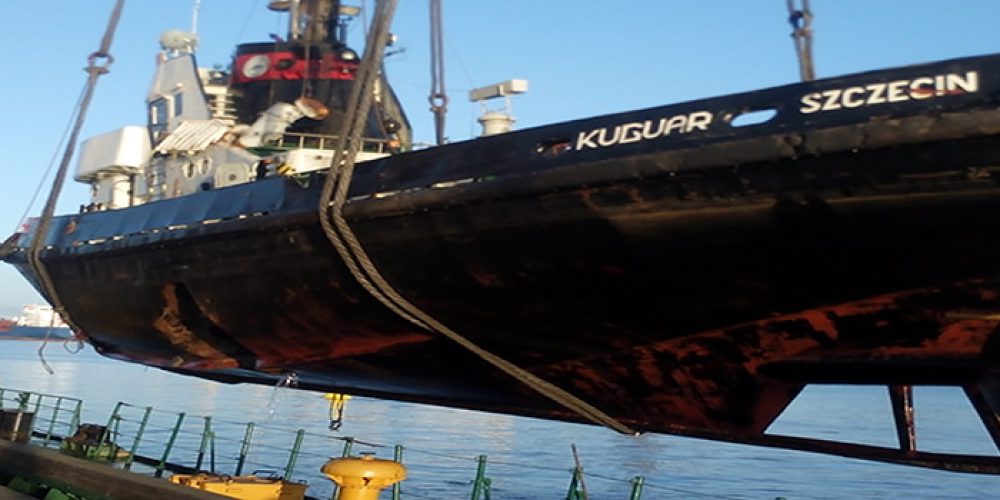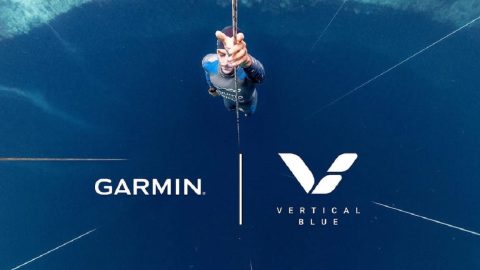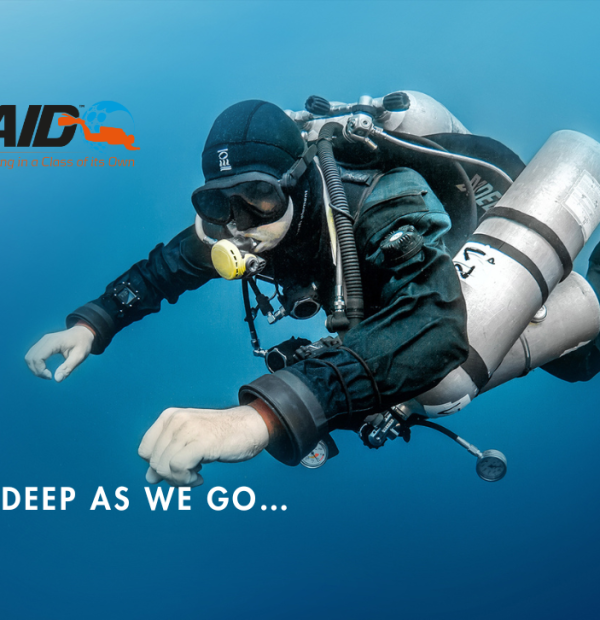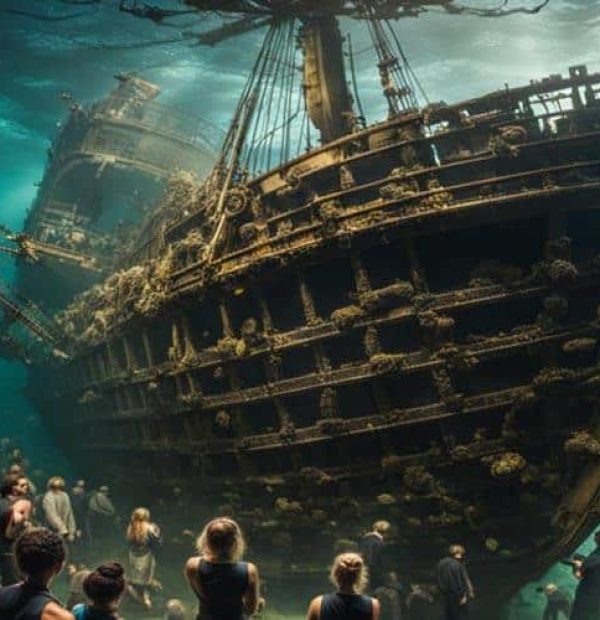Monday, 13 May 2024
Menu

Ships sail and… unfortunately, sometimes sink. Each time it is a tragedy for the families and a huge loss for the companies. However, when the sludge of tragedy settles, all that is left at the bottom of the sea is the wreck. Thousands of tonnes of steel resting beneath the surface of the sea form a strange but harmonious whole with the surrounding environment. The ship then becomes an attraction and a place of adventure for wreck divers, who penetrate, train and visit such a place learning about its history. However, not every wreck can rest on the bottom. Some of them make further sailing dangerous or become a threat to the environment. Then they have to be recovered.
Due to its size, wreck excavation is a very complicated and expensive operation which requires assembling an appropriately experienced team of divers. The tradition of wreck excavation in Poland dates back to the end of the 1940s. Just after World War II Polish ports, rivers and waterways were blocked by thousands of wrecks lying after the turmoil of war. Divers from Denmark and Russia, employed on the basis of post-war treaties, started to work on clearing the fairways. It was then that the Polish Salvage began to set up Polish diving teams to excavate and remove obstacles.
Due to the multitude of wrecks, in a very short time the Poles developed the methodology and technology of excavation and their removal. The father of these most difficult operations was captain Witold Poinc, who in the 1950s even published a handbook on wreck excavation. There you can find methods of lifting with a crane, barges or displacement pontoons. Methods of turning wrecks, giving them their own buoyancy and a lot of other interesting information. All these methods were created and tested during the excavation of such wrecks as the Gneissenau, which blocked the entrance to the port of Gdynia, the Seeburg lying at a depth of almost 50 metres and many others.
By the end of the ’50s there were few wrecks left to excavate and the divers were redeployed to other tasks. Still occasionally a wreck was excavated, but these were sporadic operations and the experience of the old divers and their knowledge began to fade.
In early 2015, a collision occurs on the Świnoujście waterway. As a result of a collision with a large ship, the tug Kuguar sinks in a few minutes. Fortunately, no one dies. Unfortunately, the wreck is located on a very busy fairway, making navigation difficult. The keel of the wreck lies 12 metres under water, while the masts stick out above the water surface. A team of divers from the Szczecin-based diving company Nurek-Service is now excavating the wreck.
Their first task was to examine the wreck and find the cause of the sinking. After careful examination, the divers located a very large hole in the bottom of the wreck made by a pear from another ship. This was certainly the direct cause of its sinking. The divers’ second task was to secure all the holes from which oil or other environmentally hazardous substances could have been released.
Once the wreck had been surveyed and secured, a plan of extraction operations was drawn up. The Kuguar was to be lifted using the floating crane “Maja” owned by the PRO company. Maja, with a lifting capacity of 330 tonnes, is the largest floating crane in Poland. Once it was positioned at the berth in Świnoujście, work could begin.
The wreck was to be raised on 10 cm thick ropes and the first task for the team of divers and Mai operators was to pull these ropes. While the first ceiling was installed without any problems, the second one posed quite a challenge. First, a tunnel was flushed under the wreck, through which a thin wire rope was fed. Then thicker and thicker ropes connected with shackles were pulled through this opening.
Unfortunately, at one stage of the operation the ropes became jammed and could not be pulled any further. Further forceful struggling with the problem could have caused the ship to capsize. The use of a second tug with a very powerful winch solved the problem and the ceilings were pulled through. Another problem was a huge block of concrete lying in the silt. After investigation it turned out that this was a remnant from the excavation of a wreck from the 1950s.
The divers’ work on this wreck was not easy. In addition to poor visibility, the diving was hampered by a very strong current reaching up to 2 knots. This meant that if the diver let go of the wreck, he would be out of it within seconds. The team was of course working with a diving helmet supplied with breathing gas from the surface and with communication. In addition, the surface team had a constant view of the diver’s work thanks to a camera on the helmet.
When two ropes, each weighing 1.5 tonnes, were lying under the wreck, another four such ropes ended with shackles were lowered on a special trapeze from a crane. The divers’ task was to connect the ceilings under the wreck with those lowered on the trapeze. The exceptional weight of the ropes, each weighing 1.5 tonnes, and the shackles, each weighing several dozen kilograms, complicated the task. However, thanks to the experience of the divers, the team managed to cope with this task as well.
Now that everything was ready, the lifting of the wreck began. Contrary to appearances, this operation did not take minutes, but hours. First, the ceilings were tightened. When it was clear that they were well in place, the wreck was raised to the waterline. As soon as the deck emerged a little above the waterline, the divers installed pumps inside to increase the wreck’s buoyancy. At the climax the crane’s weight showed 313 tonnes. Once the water had been pumped out, the wreck was placed on Mai’s pontoon and transported to the scrapping site.
This short story represents probably the first such large-scale wreck removal operation since the 1950s, that is, since the days when PRO divers were clearing harbours and fairways. It was certainly an extremely interesting experience for both the divers and the whole team working on this operation. On the one hand, it is a pity that there are not more such tasks, because they are extremely interesting, but on the other hand it is positive that ships do not sink so often anymore.










Welcome to DIVERS24.COM, your daily source of scuba news, freediving, scuba diving information, and equipment reviews. Our comprehensive coverage of the dive industry from A to Z provides you with all the latest scuba news, training updates, underwater photography tips, and everything else related to scuba diving. Whether you’re a beginner or an experienced diver looking for more knowledge about scuba gear or techniques – we’ve got it covered! With our in-depth articles written by experienced divers who have been there and done that, you are sure to find exactly what you need here at Divers24.com. Dive into scuba news today!
Underwater Media Sp. z o.o.
Szafarnia 11/F8,
80-755 Gdansk, Poland
Welcome to DIVERS24.COM, your daily source of scuba news, freediving, and scuba diving information. Sign in for a weekly news update and discount coupons for dive gear and apparel.
@2023 - underwatermedia.pl. All Right Reserved. Designed and Developed by Tworzenie stron internetowych Gdansk

The Divers24 portal is currently the largest online medium treating diving in Poland. Since 2010 we have been providing interesting and important information from Poland and around the world on all forms of diving and related activities.
Contact us: info@divers24.com